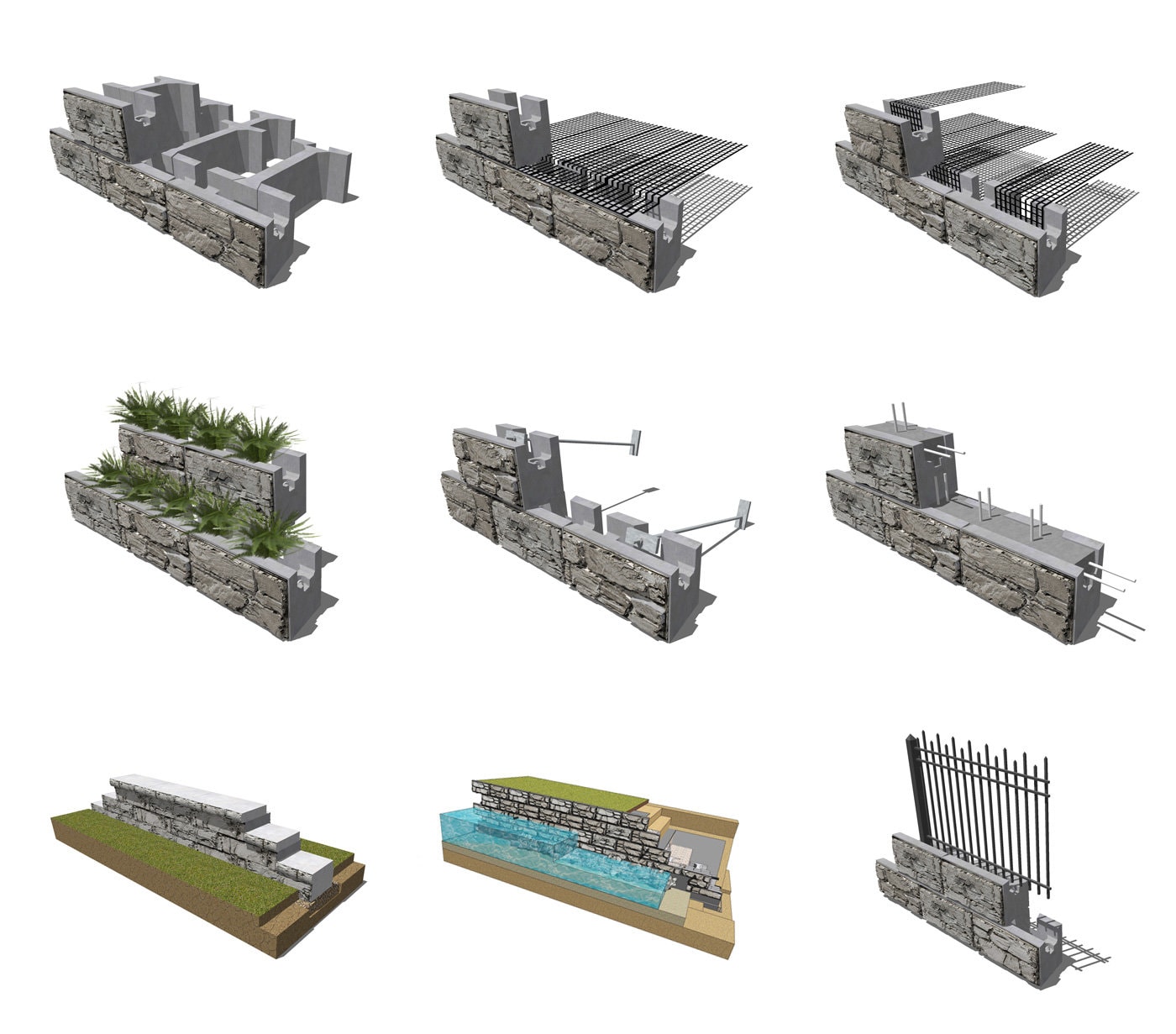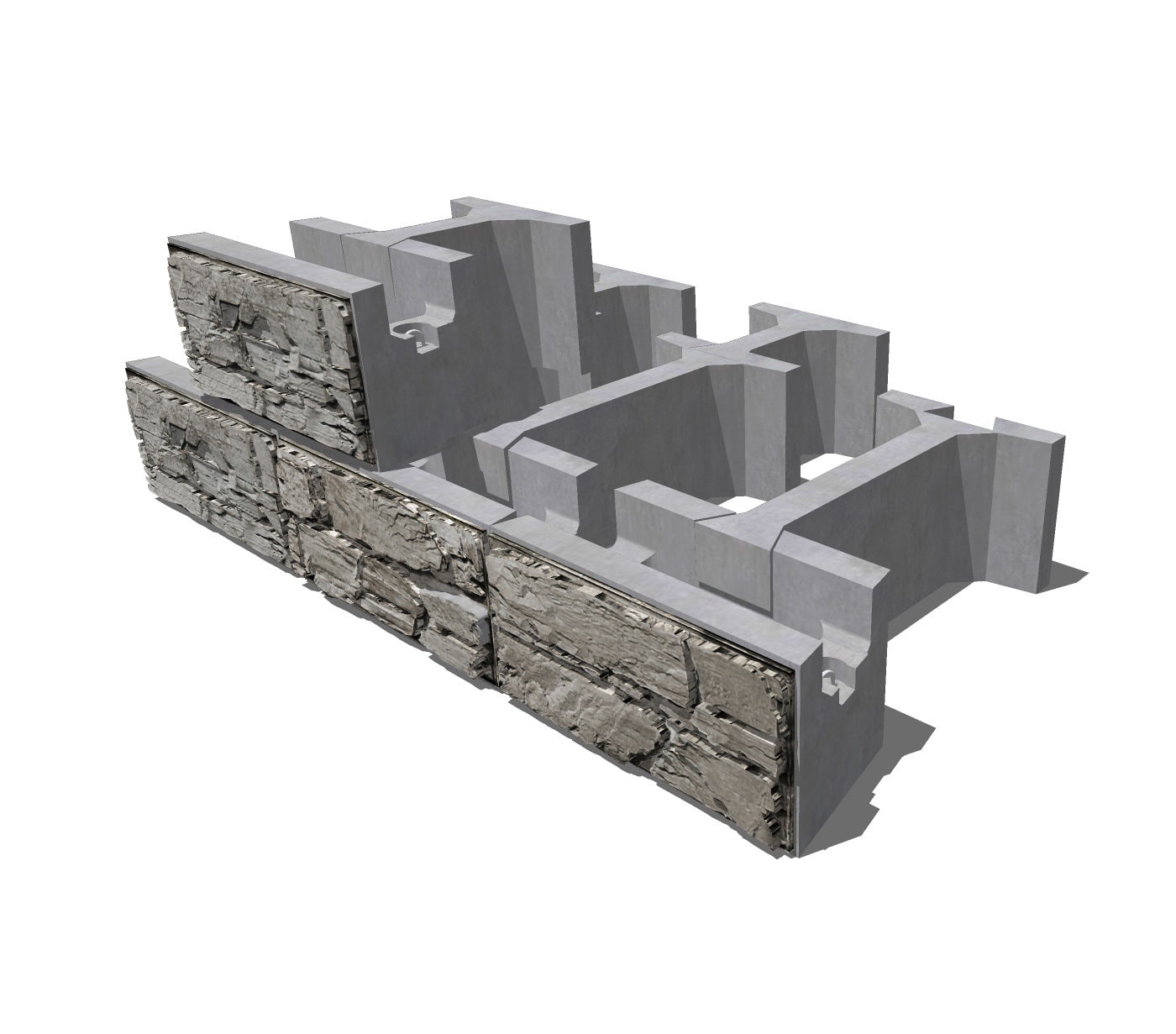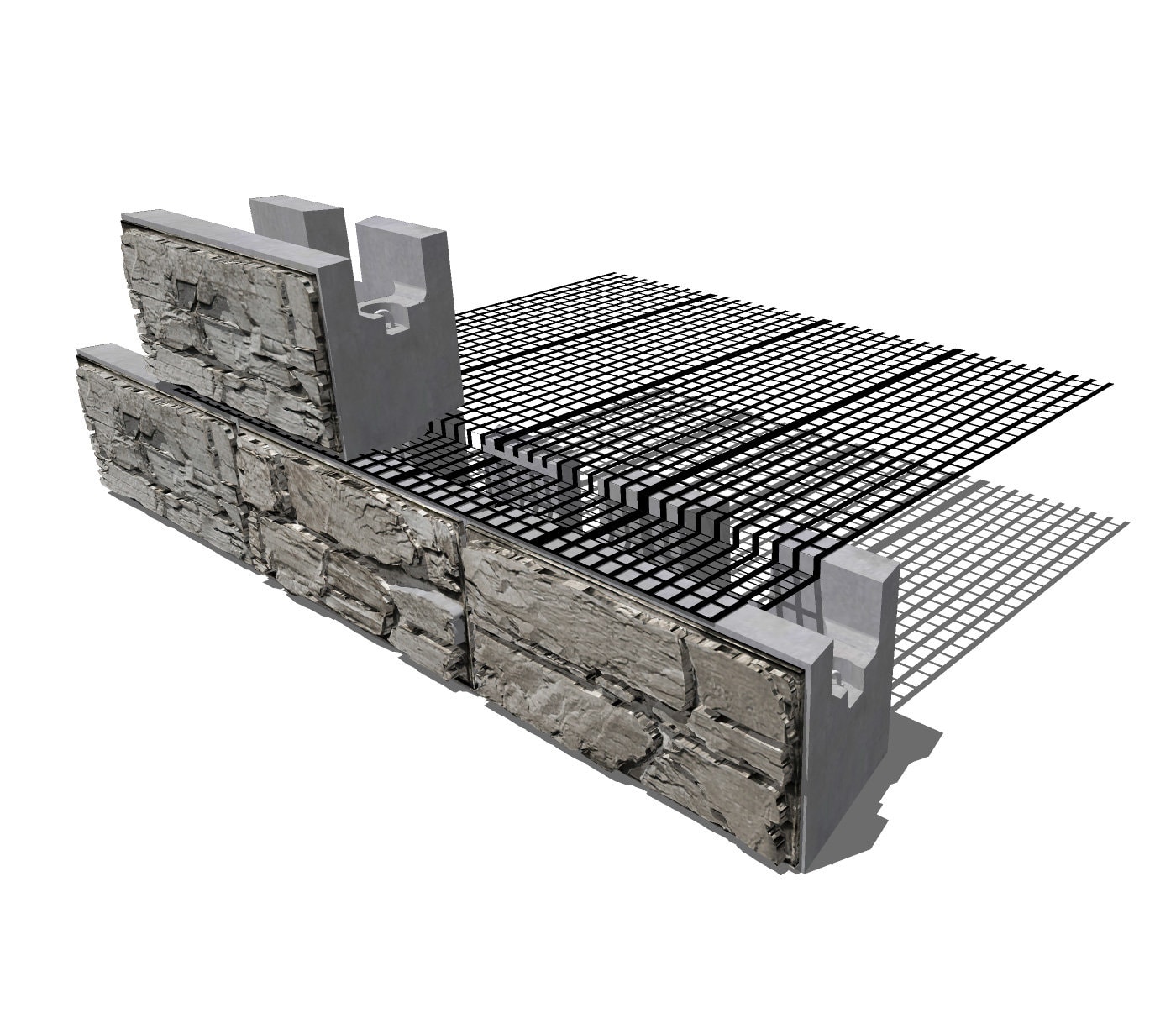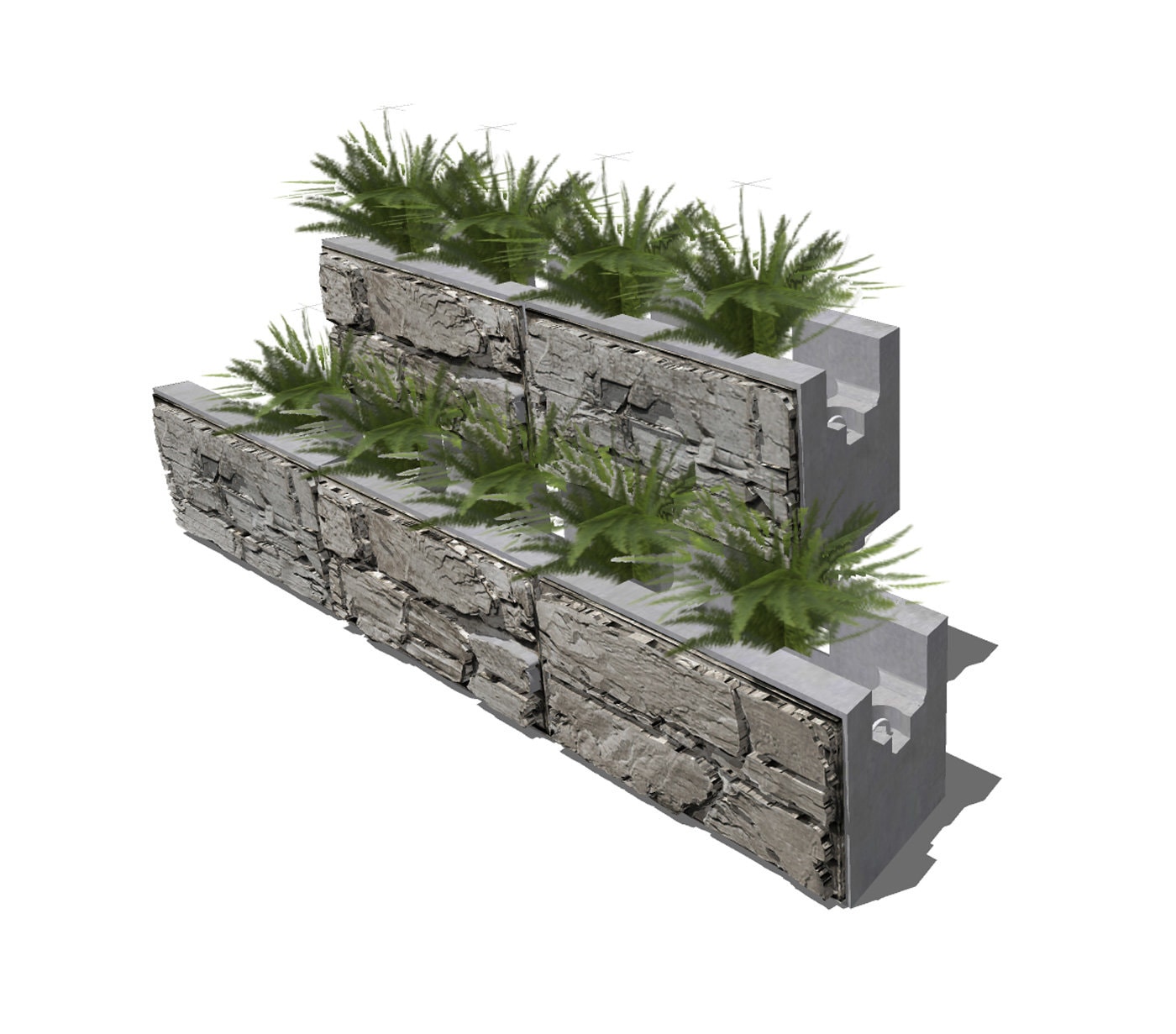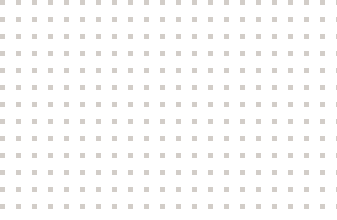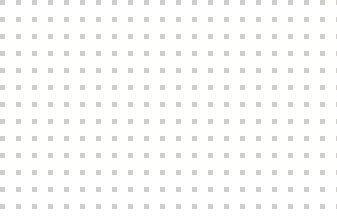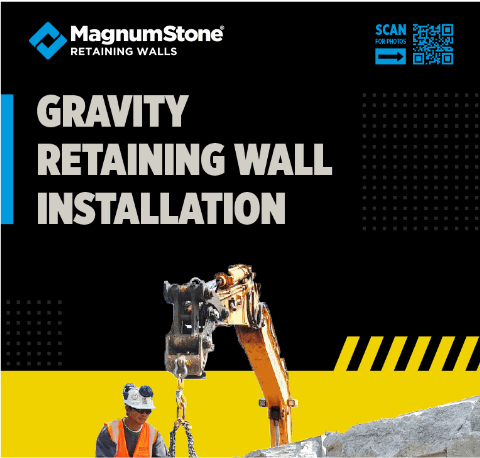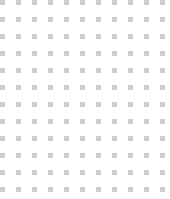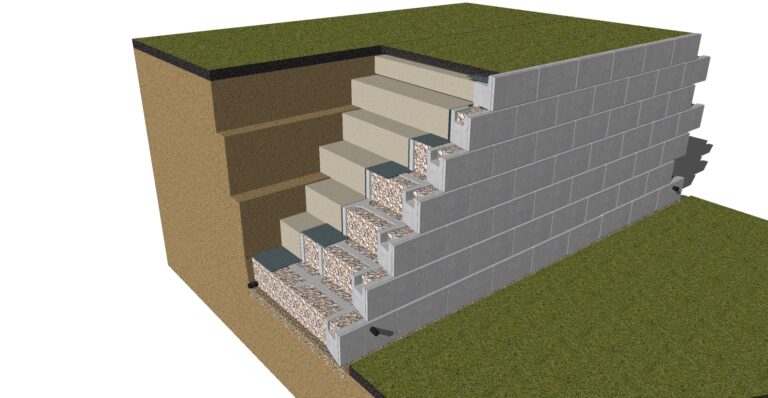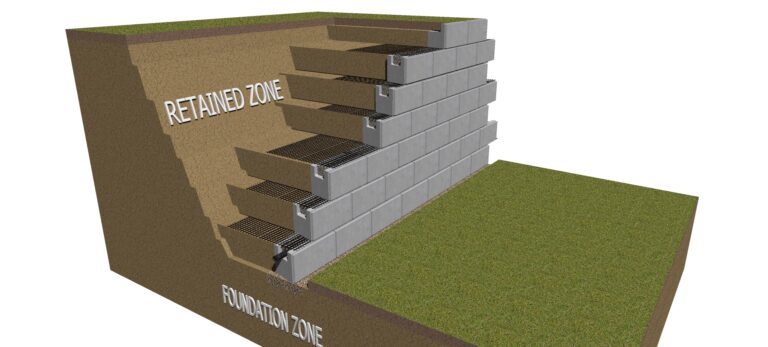Gravity Retaining Wall Installation
- MaxumStone is available in 0 / 2.4 / 4.5 degree batter (setback). Check with your local producer for availability.
- Face textures vary from producer to producer. Please check with your local sales representative for more information and styles available.
- It is always recommended that a qualified engineering consultant be hired for all projects by the owner of the gravity retaining wall project.
- Soils test and analysis should be completed before design and excavation are performed. Understanding and utilising the correct soils information will help to determine the length depth of excavation and gravity retaining wall units.
Call before you dig. These are typically free services in most counties and jurisdictions. They will come to the site and mark out where all of the utilities are underground.
Canada – digsafe.ca
USA – call811.com
Australia – byda.com.au
United Kingdom – national-one-call.co.uk
New Zealand – beforeudig.co.nz
STEP
01
Planning The Gravity Retaining Wall
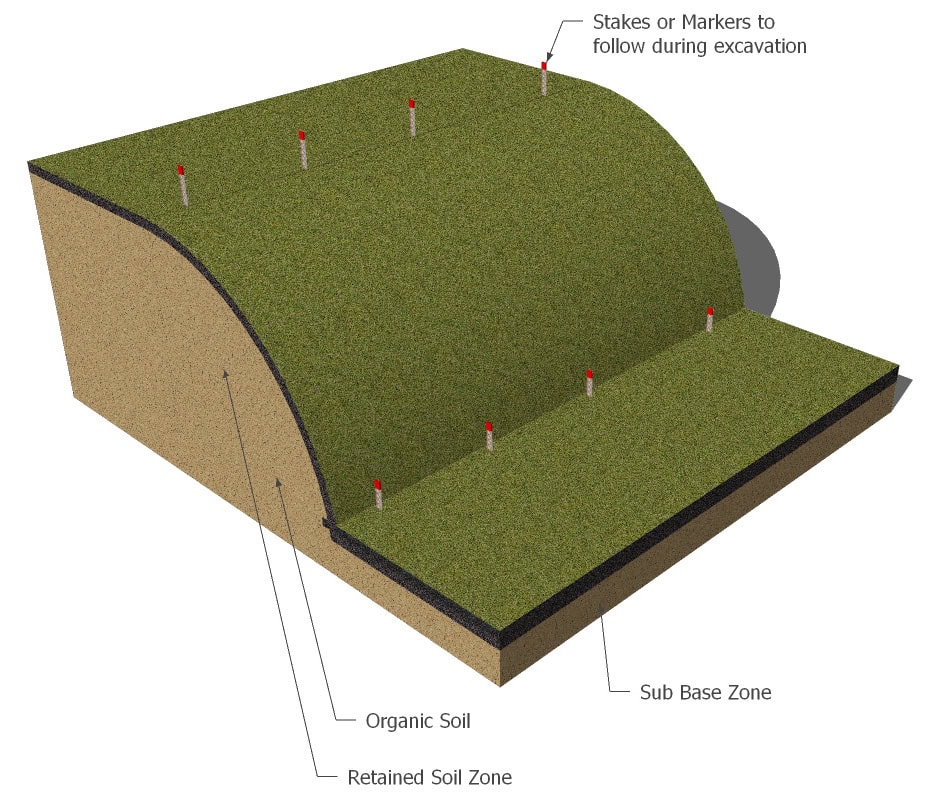
Review
-
Mark the bottom and top of the gravity retaining wall excavation location with spray paint or stakes.
-
Establish proper elevation points for both the bottom and top of the wall before starting excavation.
-
Organic Materials should not be used in any Backfill Zones.
-
Store and protect good quality Backfill Materials from inclement weather during construction.
STEP
02
Excavating The Gravity Retaining Wall
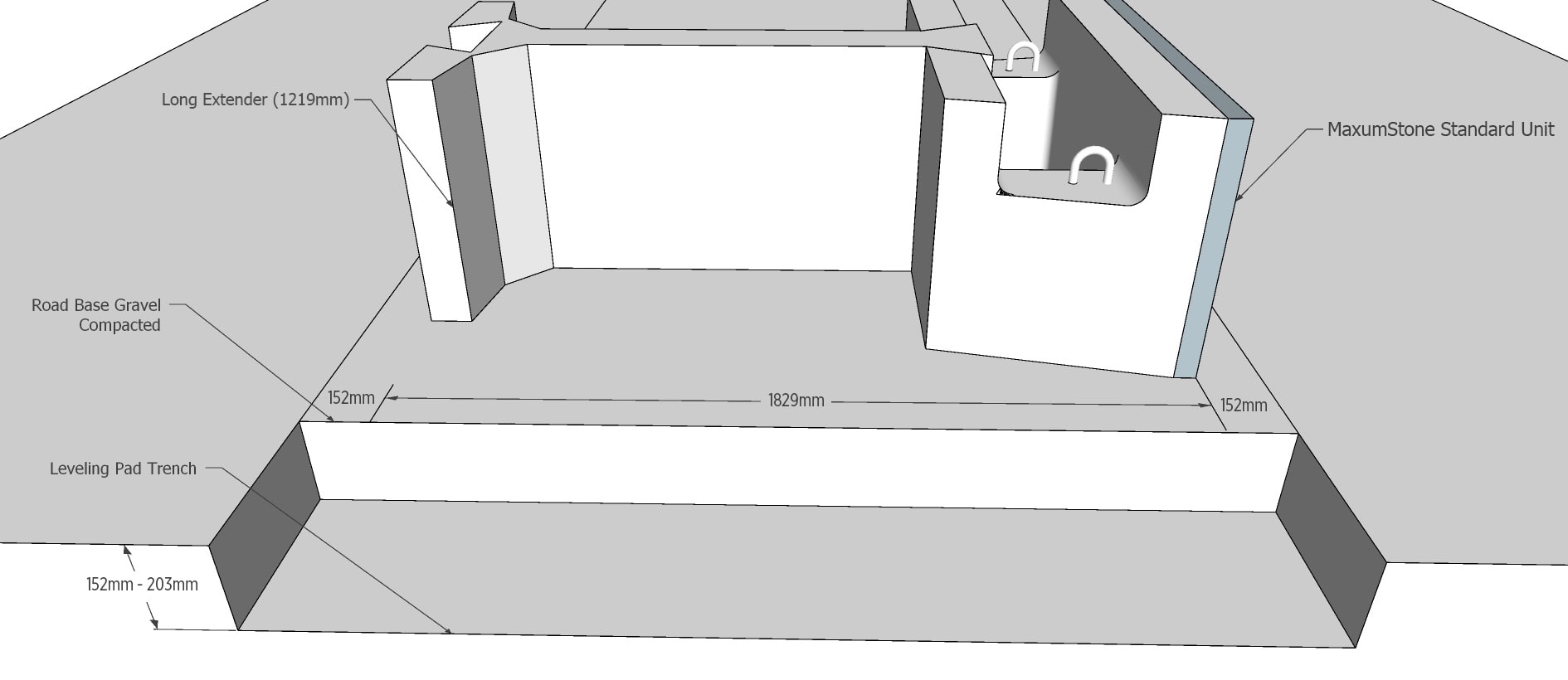
Figure 1
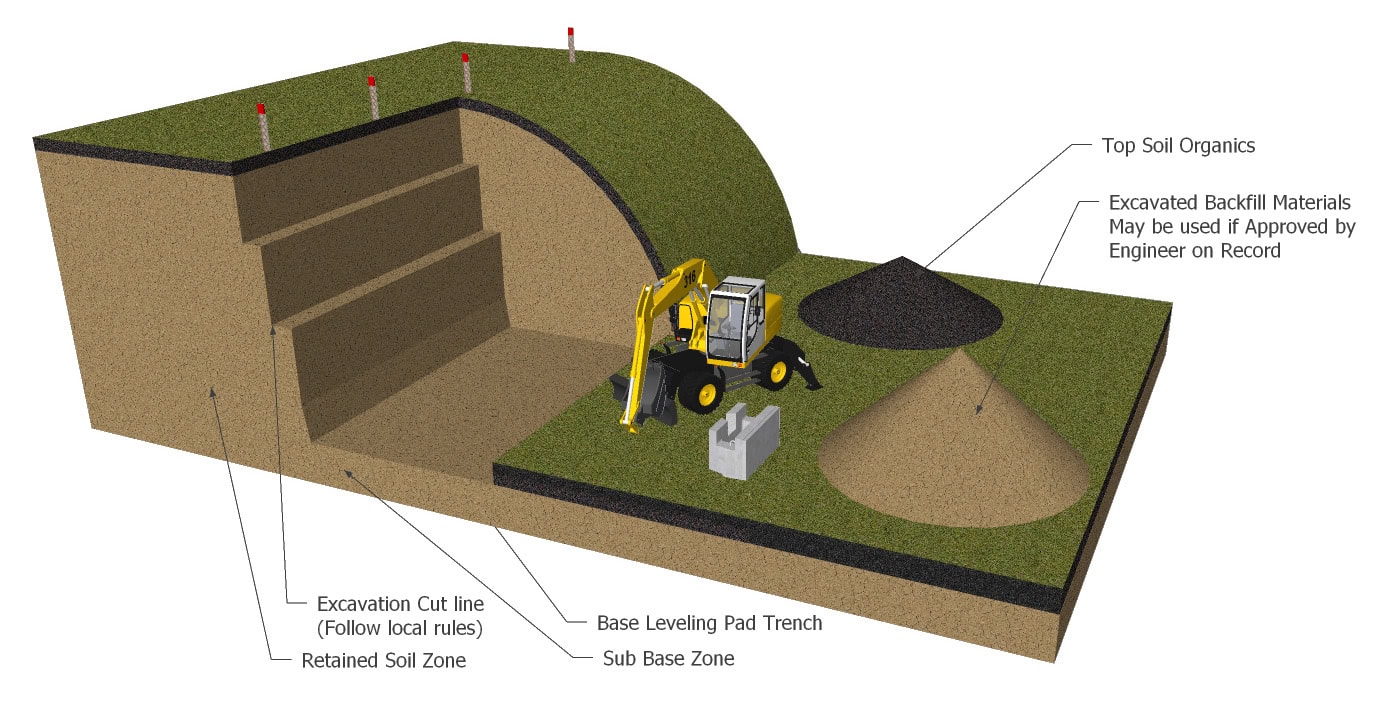
Review
-
Excavate and prepare Sub Base Levelling Trench 150 to 200mm below first course. This will be filled with a good 20mm road base material.
-
Figure 1 – The Leveling Pad Trench Depth should be cut out to approximately 150mm from the back and and the front of the total depth of the base course. For instance, MaxumStone Standard Unit 610mm + 150mm (front) + 150mm (back) = 910mm total.
-
Typical retaining wall burial depth or embedment Depth is 150 to 300mm. Follow engineers cross section details or design parameters to ensure the correct embedment depth is being followed.
-
Excavate cut line to a 2 to 1 slope or greater. Check with local codes and regulations to ensure they are being followed correctly.

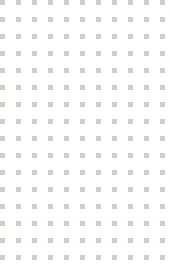
STEP
03
Sub Base and Base Stabilization Fabrics
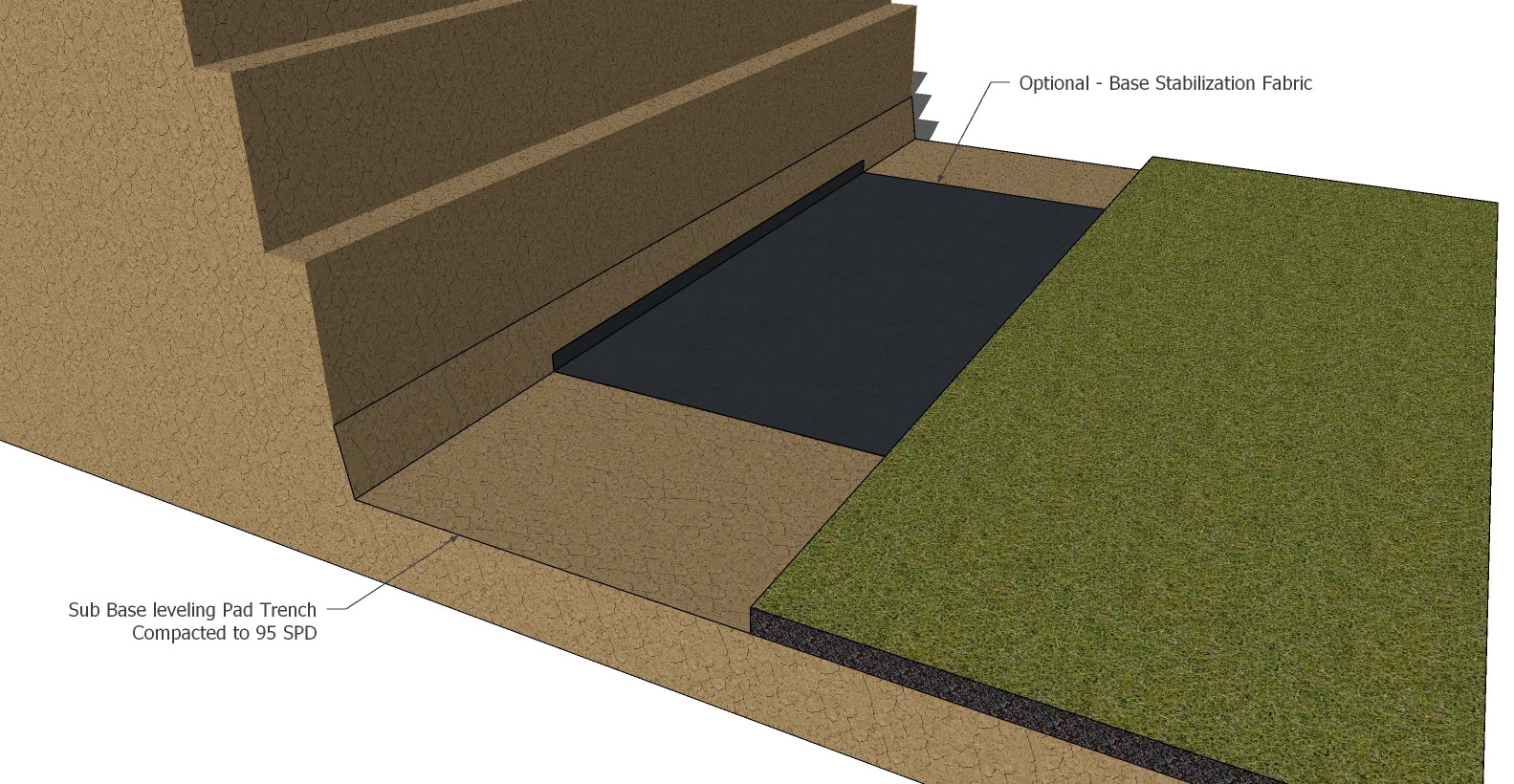
Review
-
Compact Sub Base to 95% Standard Proctor Density or greater.
-
Remove any Organic or poor soils in the Sub Base and replace with proper reinforced fill materials before compacting.
-
(Optional) place 127 to 152mm wide Base Stabilization Fabric on top of leveling pad trench.
-
Base Stabilization Fabrics will help prevent sub base materials from mixing with the gravel base leveling pad during compaction.
-
Fabric also provides extra Structural Bearing Stability to the base leveling pad.

STEP
04
Compact Gravel Leveling Pad
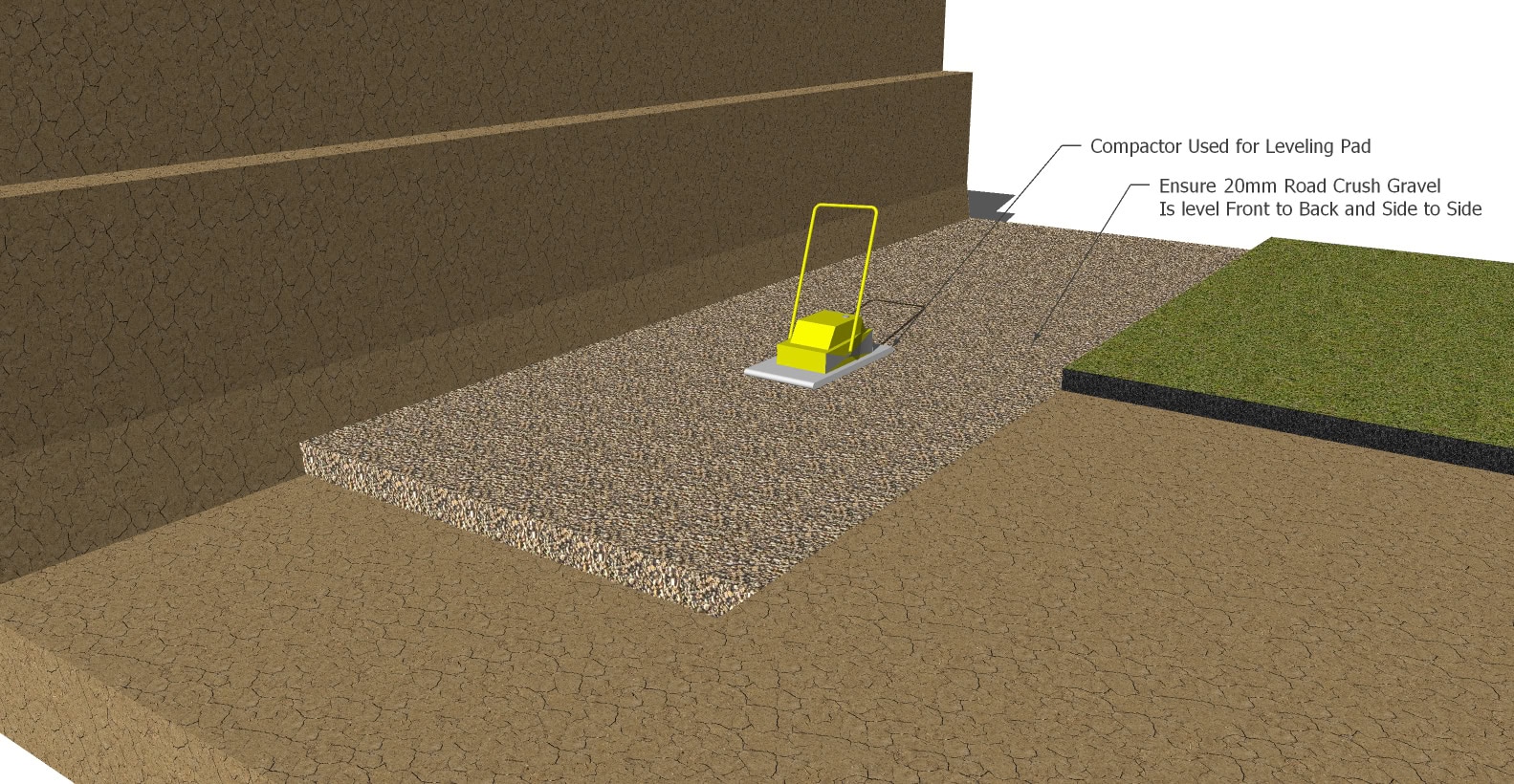
Review
-
Typically a 20mm road crush gravel or equivalent is used for the base leveling pad.
-
Compact Gravel Leveling Pad to 95% Standard Proctor Density or greater.
-
Correct Moisture Content in the gravel will help to reach proper compaction.
-
It is crucial that the base is level front-to-back and side-to-side. Any imperfections will be exaggerated as the wall goes taller.

STEP
05
Laying First Course of the Gravity Retaining Wall

Review
-
Place a steel stake at either end of the leveling pad to establish the back of the first course of units.
-
Secure tightly a string line to the stakes at either end which will provide the guide to line up the back of each MaxumStone base unit.
-
The distance of the string line between the steel stakes may vary due to heavy winds.
-
MaxumStone base units, placed on the leveling pad, are manufactured without SecureLugs.
-
Place each unit on top of the leveling pad in such a way as not to disturb the level gravel.

STEP
06
Installing Extender Units to MaxumStone Block
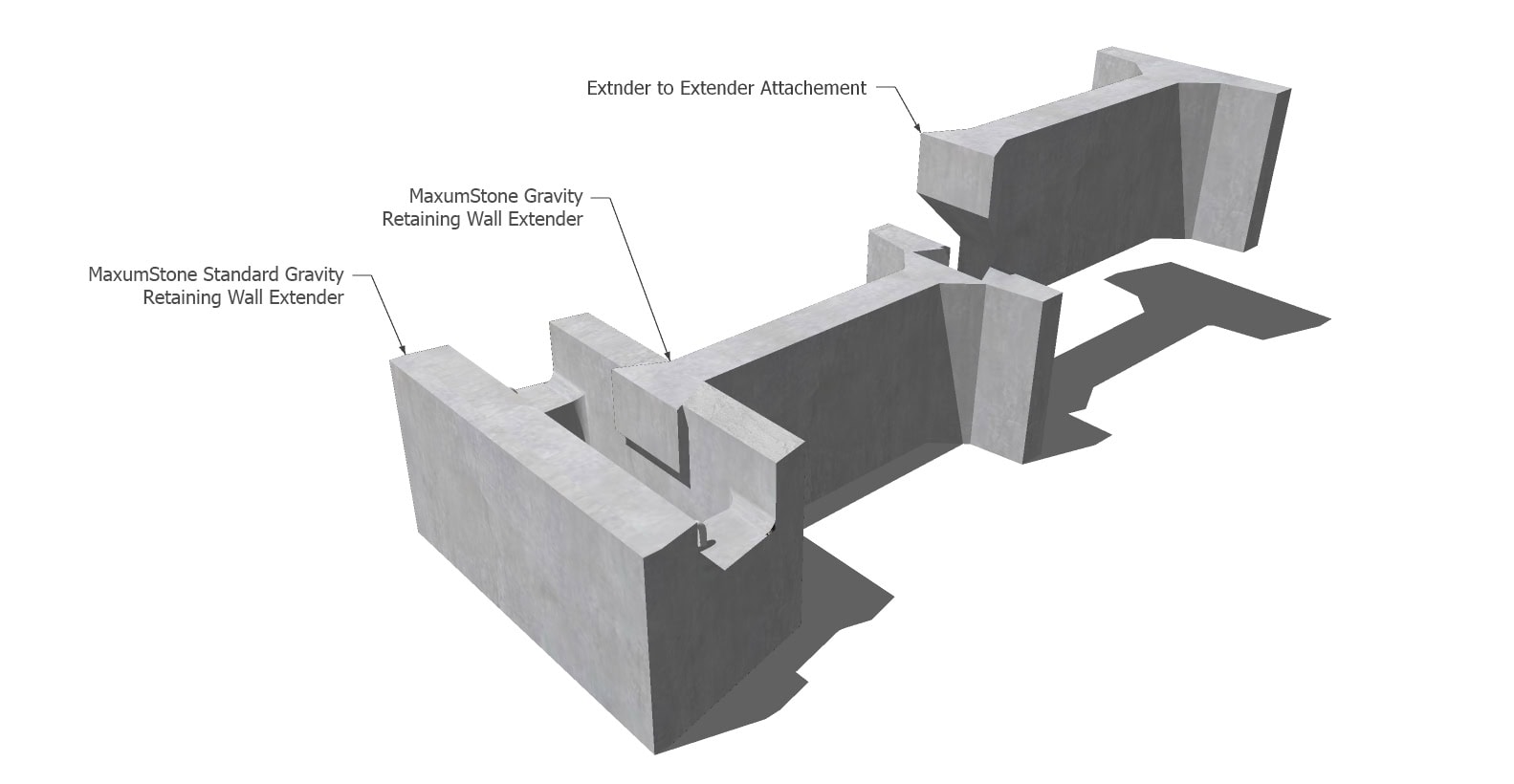
Review
-
Place the tongue of the extender block inside the groove of the MaxumStone Base Block If extender to extender blocks are required place them in the same manner as the previous ensuring that the blocks stay level and true.

STEP
07
Complete Base Row Installation
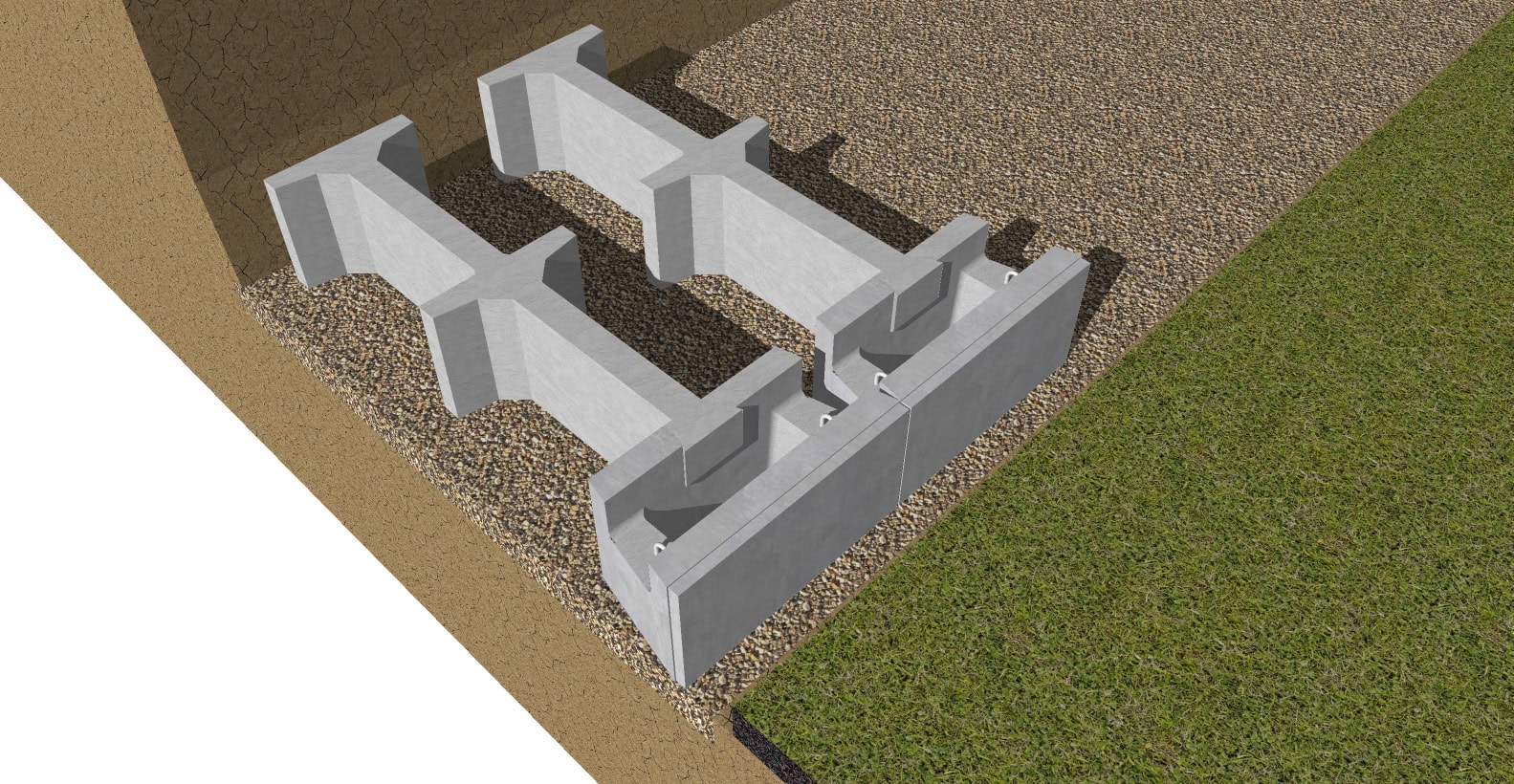

Review
-
Install the MaxumStone base block on the leveling pad. The base block should not have the lugs on the bottom.
-
Place the next MaxumStone Retaining Wall blocks level and aligned front-to-back and side-to-side.
-
Complete the first course of the gravity retaining and all extender units that are in the design.

STEP
08
Drain Pipe Options and Uses for Gravity Retaining Wall
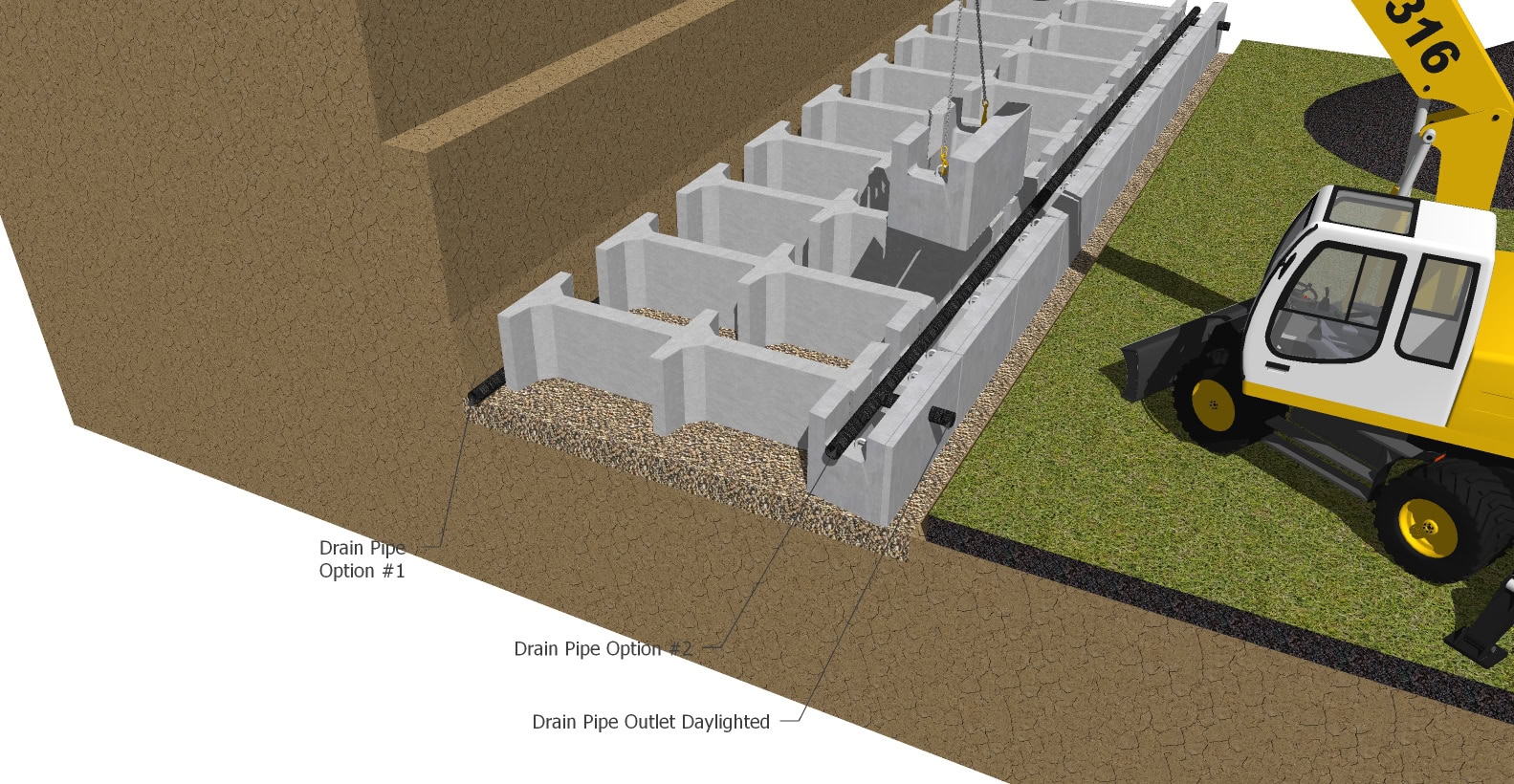
Review
-
Option #1
-
A fabric wrapped or Perforated Drain Pipe should have adequate slope to drain water in the right direction towards each Drain Pipe Outlet.
-
Drain Pipe Outlet can be every 9 to 15 m.
-
Perforated Drain Pipe, laid in the Horizontal Cores, can be a Sock Wrapped system to help prevent fines from migrating into the pipe.
-
Option #2
-
A fabric wrapped or perforated drain pipe may also be placed at the back of the of the retaining wall blocks near the excavation cut line.

STEP
09
Backfill the Gravity Retaining Wall

Review
-
Backfill the MaxumStone blocks and extender units with a clear crush gravel (#57 Stone) or equivalent slightly above the units. Run a plate vibratory compactor over the stones and units allowing them to settle in the hollow cores. Sweep any excess stones off the top of the units and blocks.

STEP
10
Installing Soil Separation Fabrics
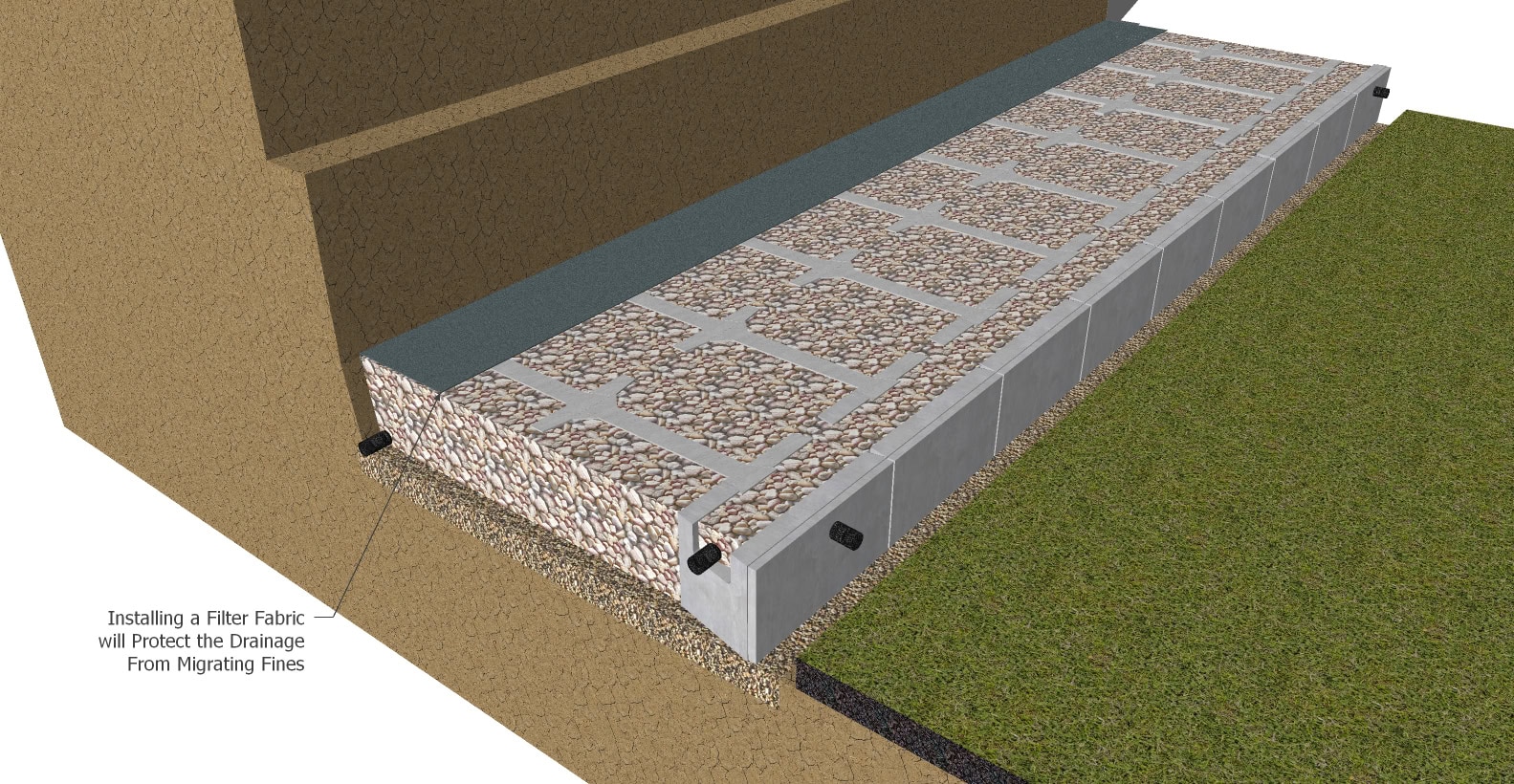
Review
-
Install a soil separating fabric (Filter Fabrics) to separate the fines and compacted backfill material from the drainage aggregate. The filter fabric can be installed directly behind the MaxumStone extender units. They can also be installed directly on top of the drainage gravel.

STEP
11
Installing Next Row of MaxumStone Retaining Wall Blocks
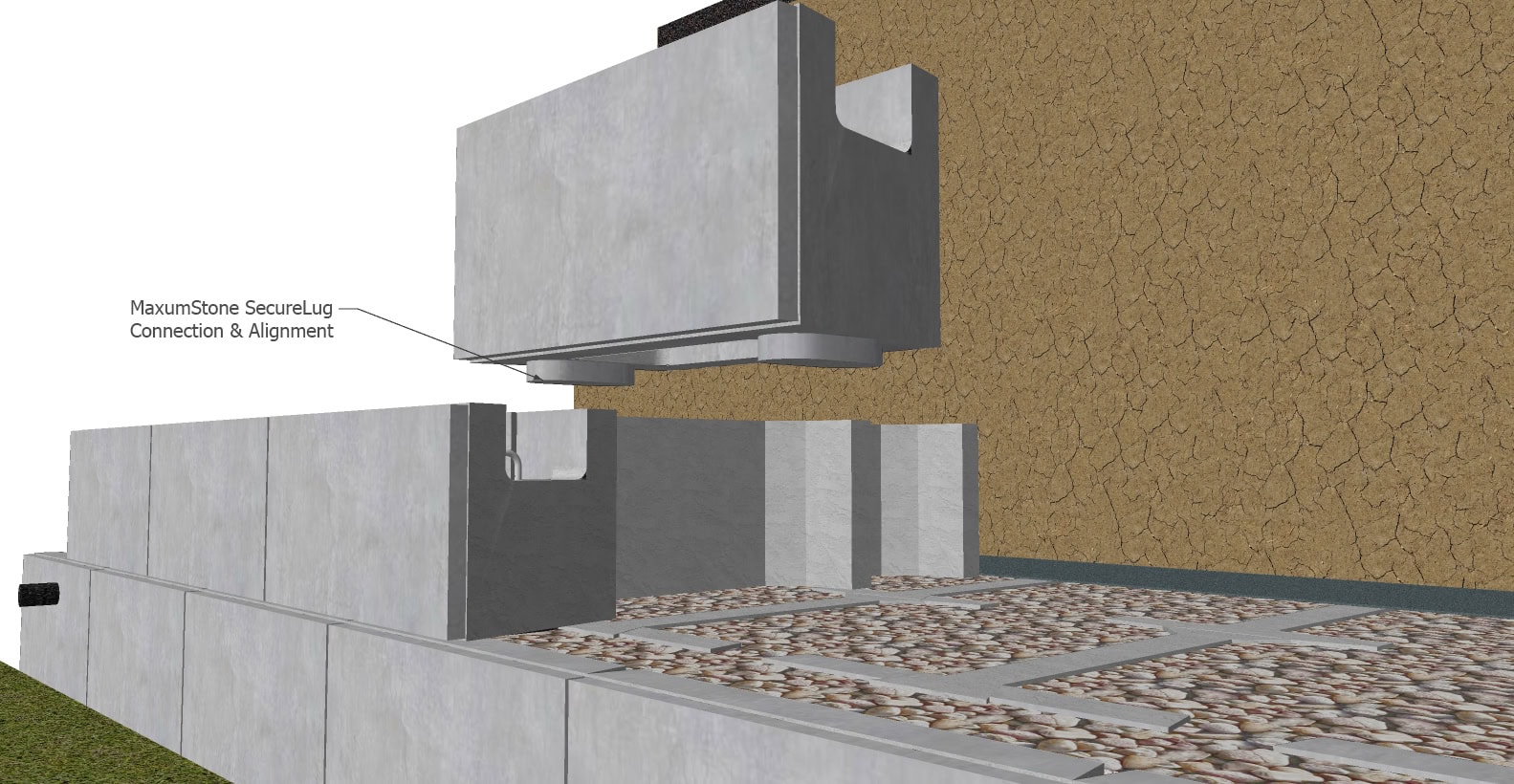
Review
-
Lay the next row on a running Bond pattern with the SecureLugs connected in the hollow core below. The SecureLug connection provides a strong block to block connection and alignment throughout building your retaining wall.

STEP
12
Continue Installation of Retaining Wall Blocks
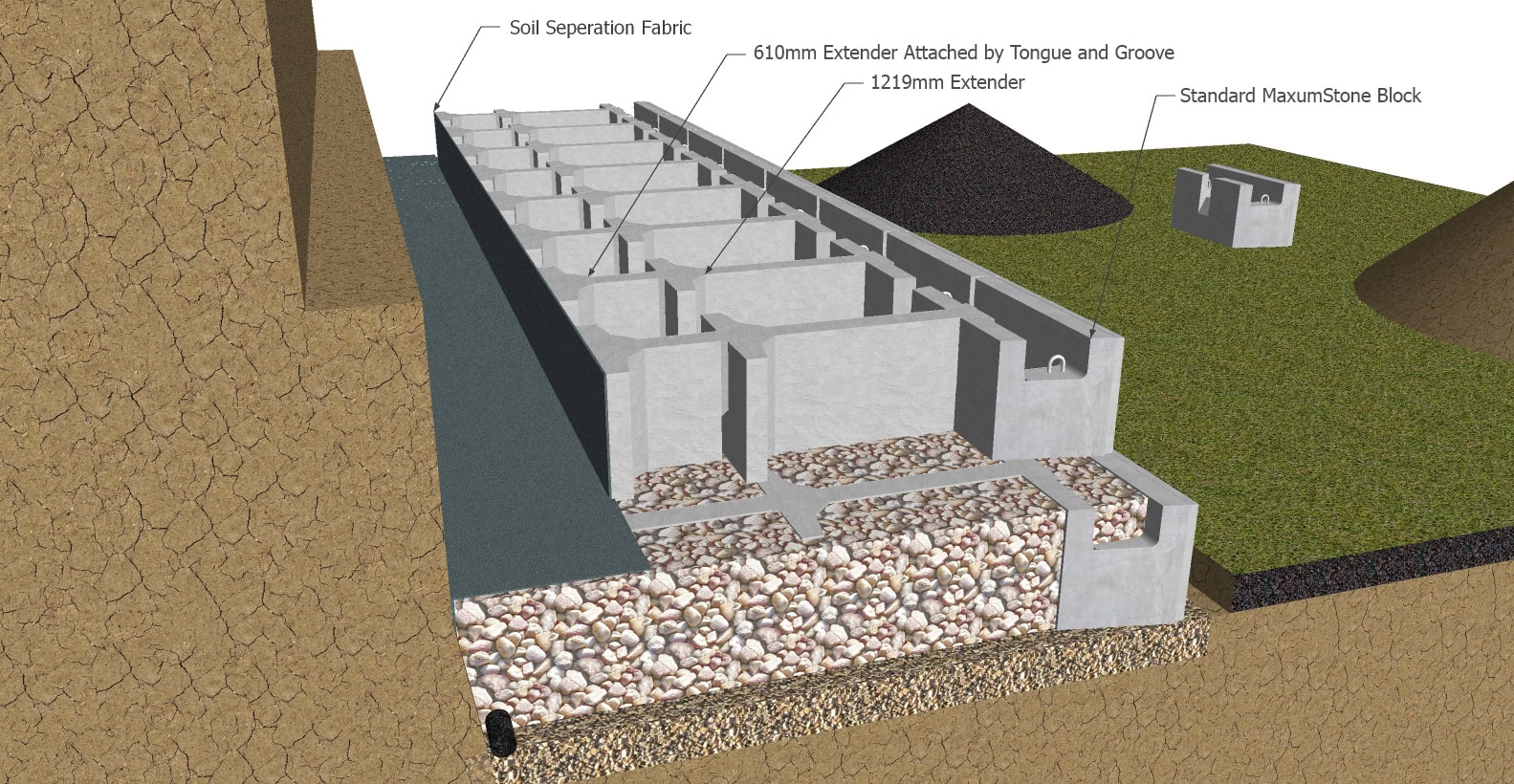
Review
-
Continue to place the MaxumStone blocks on top of the retaining wall blocks below. Ensure they are level front-to-back and side-to-side. Small adjustments may need to be made during the construction process. Soil separation fabrics can be added wherever the backfill meets the drainage gravel to keep fines from migrating into the drainage zone.

STEP
13
Backfill and Compact Approved Materials
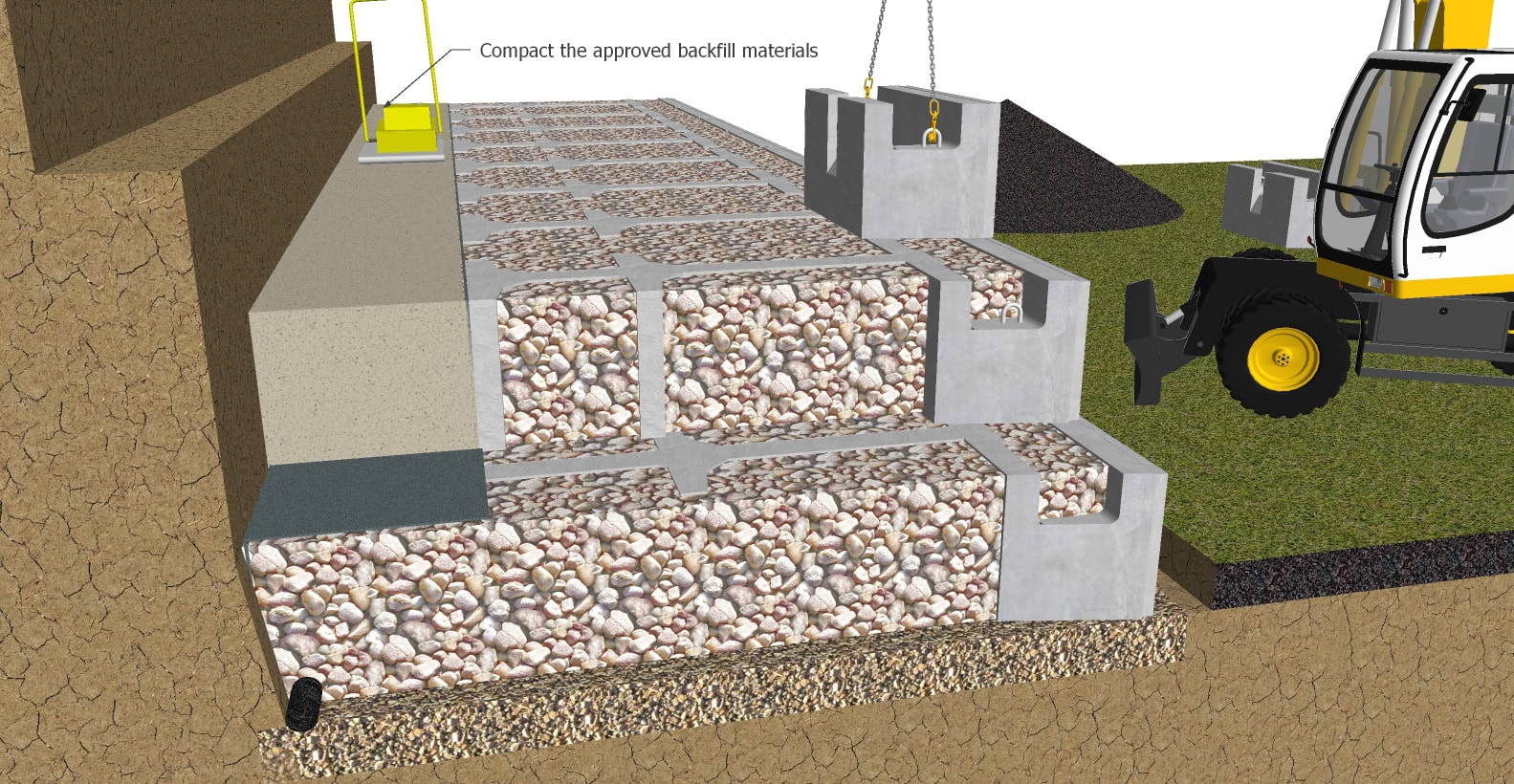
Review
-
Compact the approved backfill materials in between the excavation cut zone and the back of the retaining wall blocks. Ensure that it compacted in lifts of no more that 203mm and also compacted to 95% standard proctor density. It is crucial that these areas do not have loose fill where settlement can occur.

STEP
14
Continue Installation of MaxumStone Gravity Retaining Wall


Review
-
Continue the installation of MaxumStone big block gravity retaining wall as per the design provided. Cross section drawings will show you where the units are placed in order of depth.

STEP
15
Top Block of Gravity Retaining Wall
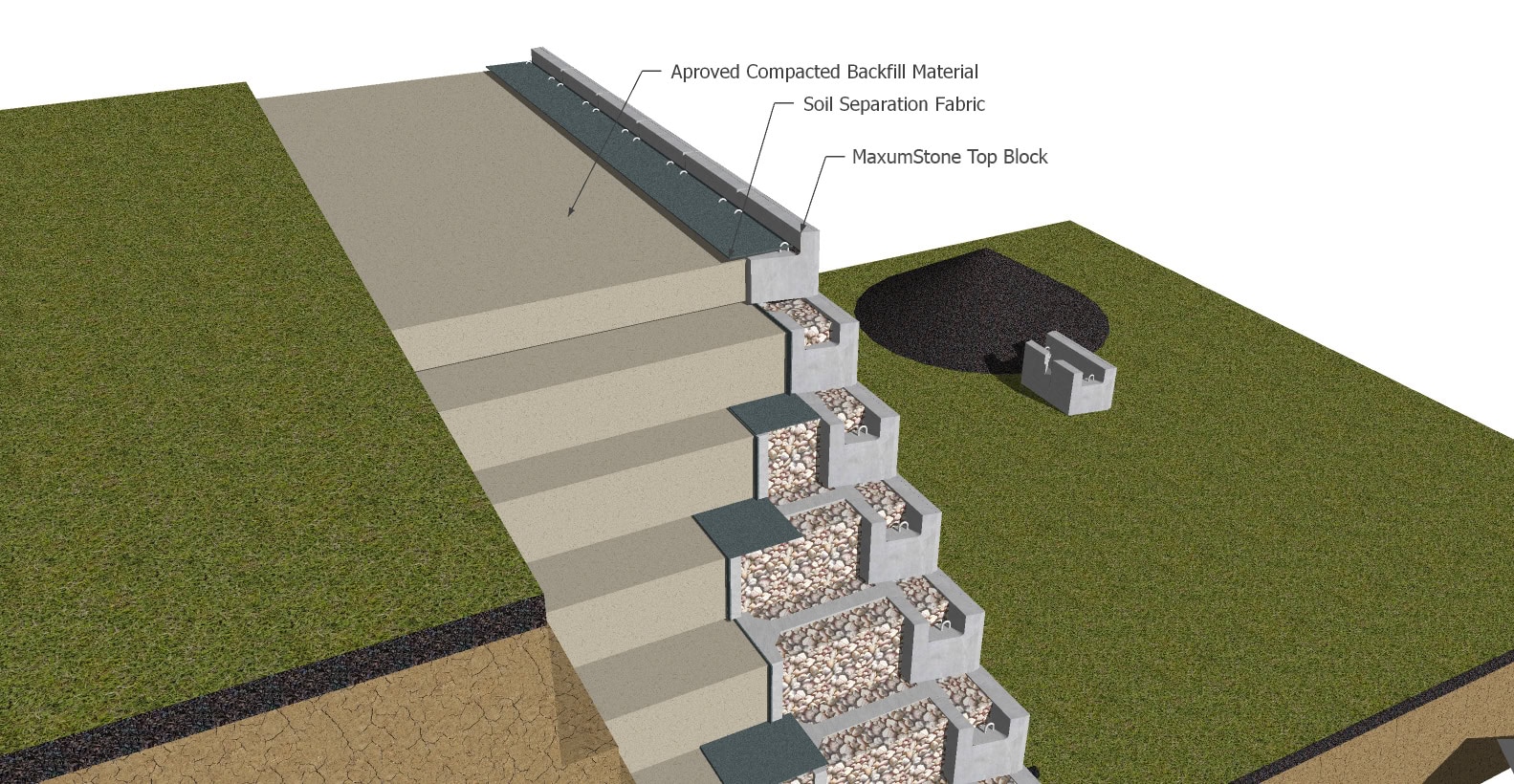
Review
-
Complete the top of the wall with MaxumStone® Top Units.
-
MaxumStone® Top Units are manufactured with the back panel 203mm lower than the front face panel.
-
The Clear Crush Drain Gravel and backfill materials will be placed flush to the top of lowered back panel. There are times when more than 203mm of top soils may be required.
-
Place a 1.8m wide Soil Separating Filter Fabric on top of the backfill and drainage gravel and against the back of the last units before placing the planting soils.
-
The fabric will prevent planting soil fines from staining the face of the wall and migrating into the Clear Crush Drain Gravel (Angular Aggregate free of fines).

STEP
16
Finish Your Gravity Retaining Wall
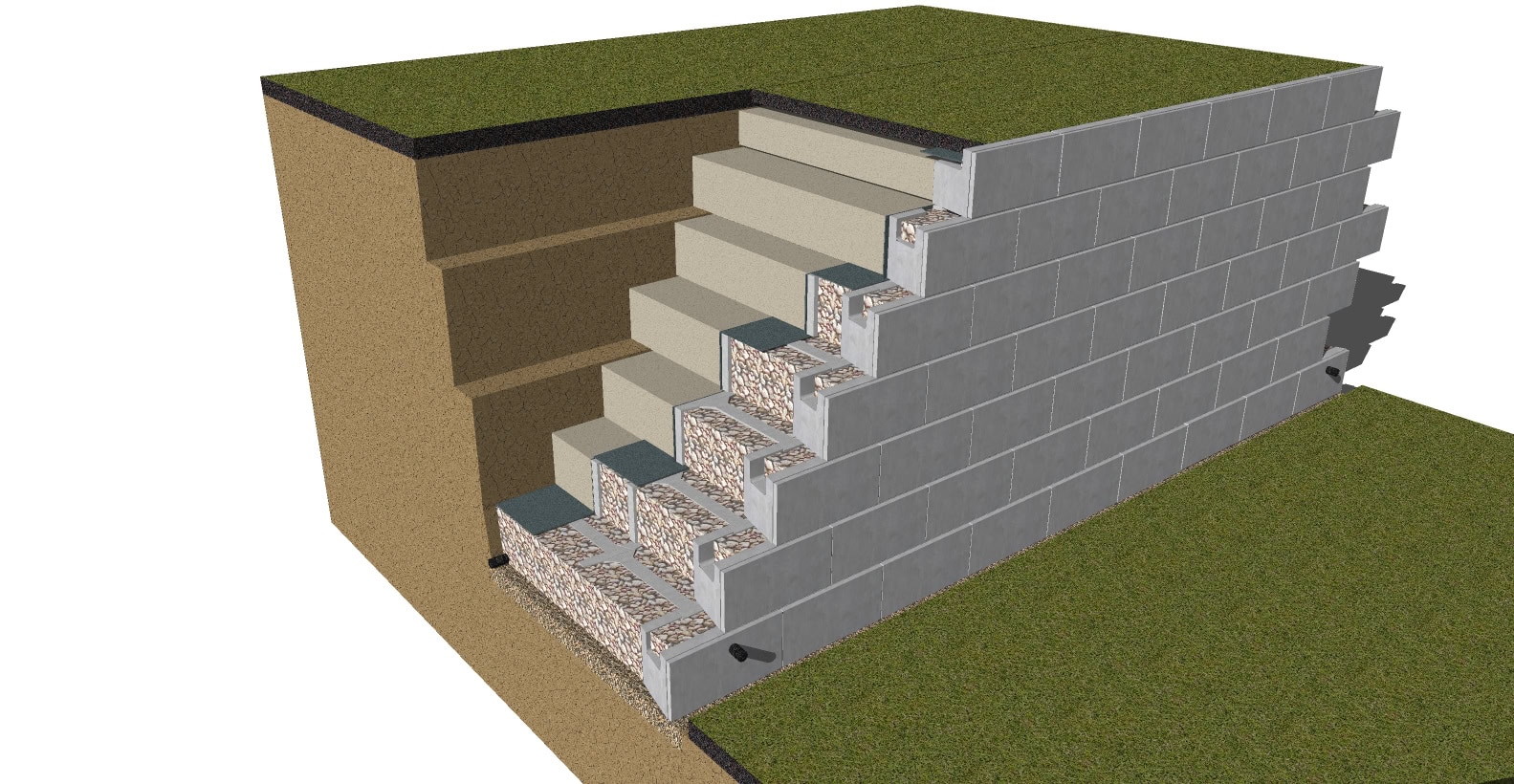
Review
-
Grade the final elevations of your gravity retaining wall.
-
Ensure that final grading is done on top and bottom of the retaining wall.
-
Make sure to protect newly placed planting soil from erosion during heavy rains or surface runoff.


